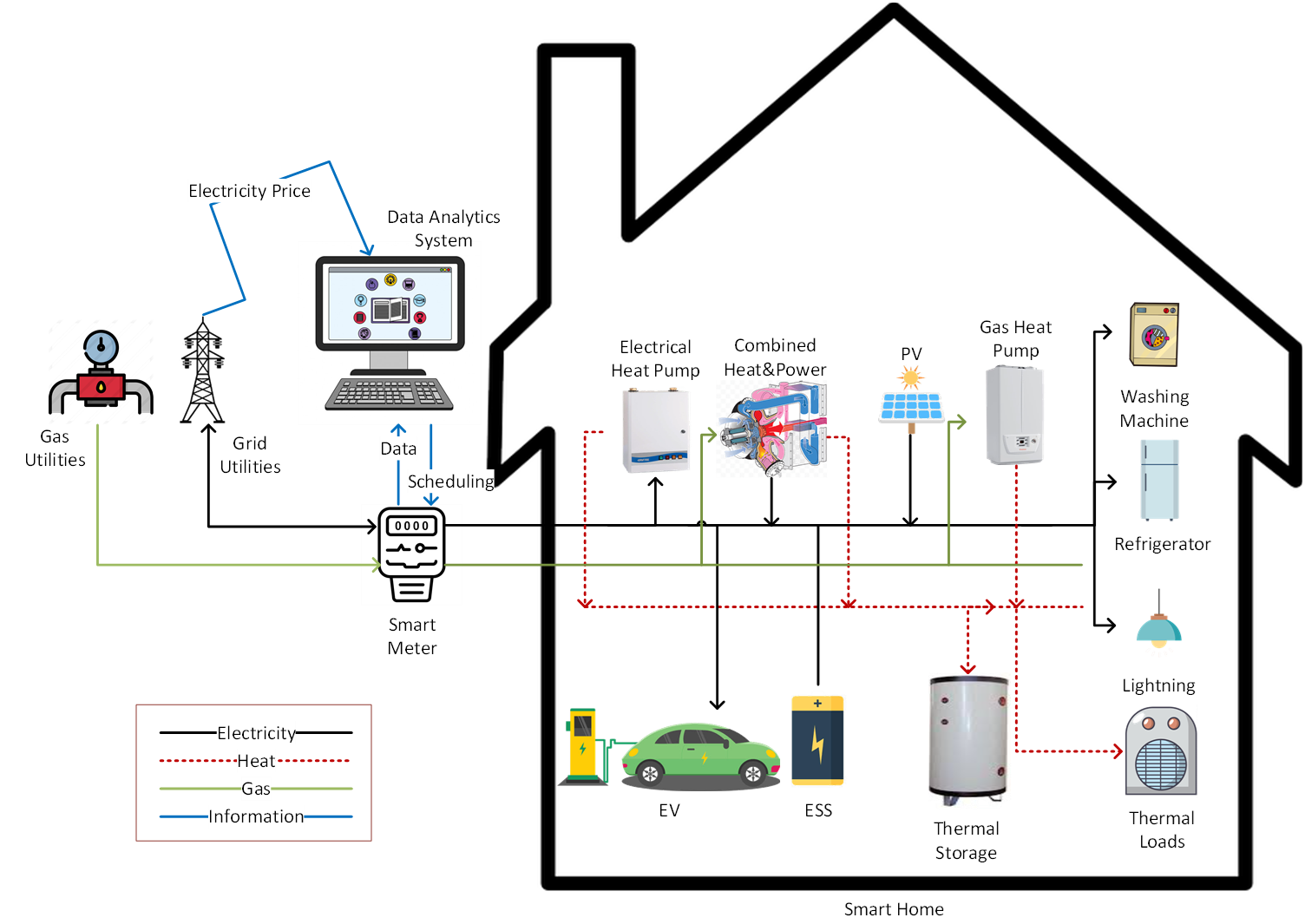
A Knowledge-Driven Data Analytics System for Adaptive Intelligence Energy Management of Smart Buildings
Synopsis
This intelligent energy management platform for both residential and commercial buildings comprises several components: non-intrusive load monitoring (NILM) and data analytics; time series forecasting; reinforcement learning-based energy management; and electricity plan recommendations.
Opportunity
The market for energy management technology is promising, driven by the increasing demand for energy-efficient solutions and the growing adoption of smart homes and buildings. Key trends and opportunities include:
Rising Energy Costs: As energy costs rise, homeowners and businesses seek ways to reduce expenses. The ability to forecast electricity prices and optimise energy consumption makes this system a valuable cost-saving solution.
Renewable Energy Integration: With a growing emphasis on sustainability, there is a trend towards renewable energy adoption. This technology's time series forecasting tools help users maximise the benefits of solar panels and other green energy sources.
Smart Homes and IoT: The proliferation of smart home devices and IoT creates opportunities for seamless integration of energy management solutions. Homeowners are increasingly interested in automating and optimising their energy usage.
Electric Vehicle (EV) Charging: The growing adoption of EVs presents an opportunity to manage EV charging efficiently. This technology can schedule EV charging during off-peak hours, reducing electricity costs for users.
This technology is well-positioned to capitalise on these trends — offering cost savings, sustainability benefits, and enhanced convenience for residential and commercial sectors.
Technology
This comprehensive platform for intelligent energy management in both residential and commercial buildings includes several key components:
Non-Intrusive Load Monitoring (NILM) and Data Analytics: Monitoring and analysis of energy usage in smart homes without invasive installations, providing insights into electricity consumption.
Time Series Forecasting: This system provides accurate forecasts for load demand, renewable energy generation, and electricity pricing, enabling proactive decision-making.
Reinforcement Learning-Based Energy Management: Using reinforcement learning algorithms, this platform optimises energy consumption during periods of fluctuating electricity prices. It schedules the operation of energy-intensive devices such as HVAC systems, washing machines, and electric vehicles to minimise costs.
Electricity Plan Recommendations: This feature offers tailored electricity plan recommendations for residential users, helping them make informed choices about energy consumption based on forecasts and preferences.
A key feature is the use of Deep Deterministic Policy Gradients (DDPG) reinforcement learning for home energy management. This approach employs neural networks to predict electricity prices and photovoltaic (PV) output, integrating energy storage systems (ESS) to maximise profit while considering long-term battery degradation costs.

Figure 1: Technical details - structure of multi-energy smart home.
Applications & Advantages
This technology offers precise energy management, reducing electricity costs, and enhancing sustainability. It optimises energy consumption through forecasting, leveraging reinforcement learning. Its non-intrusive monitoring simplifies installation and supports renewable energy integration, EV charging optimisation, and regulatory compliance.
Applications:
Residential: Smart homes benefit from reduced energy bills.
Commercial: Energy efficiency and cost savings in office buildings and businesses.
Renewable Energy: Enhances the efficiency of solar and wind power systems.
Electric Vehicle Charging: Efficiently schedules EV charging, minimising costs.
Sustainability Initiatives: Supports green building practices and energy conservation efforts.






.tmb-listing.jpg?Culture=en&sfvrsn=b5366f51_1)
.tmb-listing.jpg?Culture=en&sfvrsn=3b74ec1c_1)







